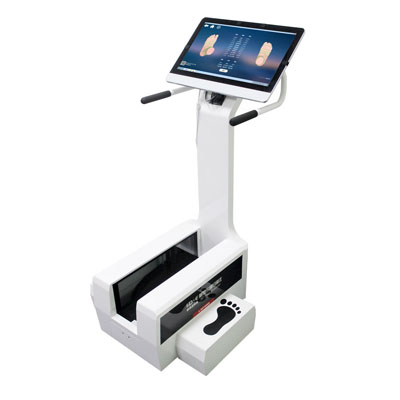The Foot as an Essential Weight-Bearing and Locomotive Organ: Its Health Directly Affects the Overall Balance and Comfort of the Body. In Traditional Occupational Health Examinations, Assessments of Foot Health Often Relied on Subjective Inquiry and Simple Physical Examinations, Failing to Provide a Comprehensive and Accurate Reflection of Issues. The Emergence of Foot 3D Scanners Has Radically Changed This Situation. Using Non-Contact, High-Precision 3D Scanning Technology, These Devices Can Quickly Acquire Detailed Data on Individual Feet, Including Arch Shapes and Pressure Distributions, Providing Powerful Data Support for Occupational Health Examinations.
Principles of Operation of Foot 3D Scanners
Foot 3D scanners utilize advanced laser or optical imaging technology to complete a Full-Range Scan of the Subject’s Feet Within Seconds. These Scanners Capture Even the Smallest Elevations and Details on the Surface of the Foot. With Software Algorithms, They Generate Highly Precise 3D Models. Combined with Professional Foot Analysis Software, the Scan Results Can Be Quantitatively Analyzed to Assess Foot Shape, Structural Abnormalities, and Potential Health Risks.
Value in Occupational Health Examinations
Personalized Insoles and Footwear: Based on 3D Scan Results, Customized Insoles or Footwear Can Be Tailored to Match the Individual Characteristics of Employees’ Feet. This Effectively Alleviates Foot Fatigue and Pain Caused by Prolonged Standing or Walking, Reducing the Incidence of Occupational Foot Diseases.
Early Detection and Prevention of Occupational Diseases: Certain Occupational Diseases, Such as Flat Feet or High Arches, Are Closely Related to Abnormal Foot Shapes. Regular Monitoring with Foot 3D Scanners Can Help Detect These Potential Issues Early, Allowing for Timely Interventions to Prevent Condition Deterioration.

Optimizing Workplace Design: Based on Large-Scale Foot Scan Data of Employees, Companies Can Analyze the Specific Foot Health Requirements of Different Job Positions, Thus Improving Workplace Layouts, Flooring Materials, and Other Factors to Create a Healthier and More Comfortable Working Environment for Staff.
Enhancing Occupational Health Management: The Application of Foot 3D Scanners Makes Occupational Health Examinations More Scientific and Refined. By Collecting and Analyzing Health Data of Employees’ Feet, Companies Can Establish Comprehensive Health Records, Providing a Strong Basis for Formulating Personalized Health Management Plans and Enhancing Overall Occupational Health Management Levels.
Looking Forward: Deep Integration of Technology and Health
With Continuous Technological Advancements, the Prospects for the Application of Foot 3D Scanners in Occupational Health Examinations Will Become Even More Promising. In the Future, We Can Expect to See More Intelligent and Portable Scanning Devices, Making Foot Health Monitoring More Convenient and Efficient. Additionally, with the Deep Application of Big Data and Artificial Intelligence Technologies, Foot Health Data Will Be Integrated with Other Health Information, Offering More Holistic and Precise Solutions for Occupational Health Management.
As a New Tool in Occupational Health Examinations, Foot 3D Scanners Are Playing a Significant Role with Their Unique Advantages in Safeguarding Employee Foot Health and Enhancing Occupational Health Management Standards. We Have Every Reason to Believe That, Driven by Technology, Future Occupational Health Examinations Will Become Smarter and More Efficient, Building a Robust Health Shield for Every Employee.
